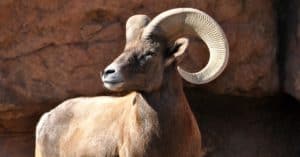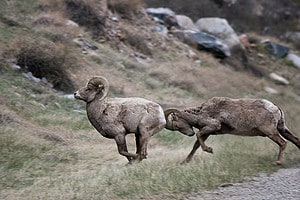As the name suggests, bighorn sheep are sheep with large and impressive horns, typically living in vibrant mountains or hot deserts! These sheep are native to North America and have muscular bodies contributing to an average weight between 160 to 250 pounds.
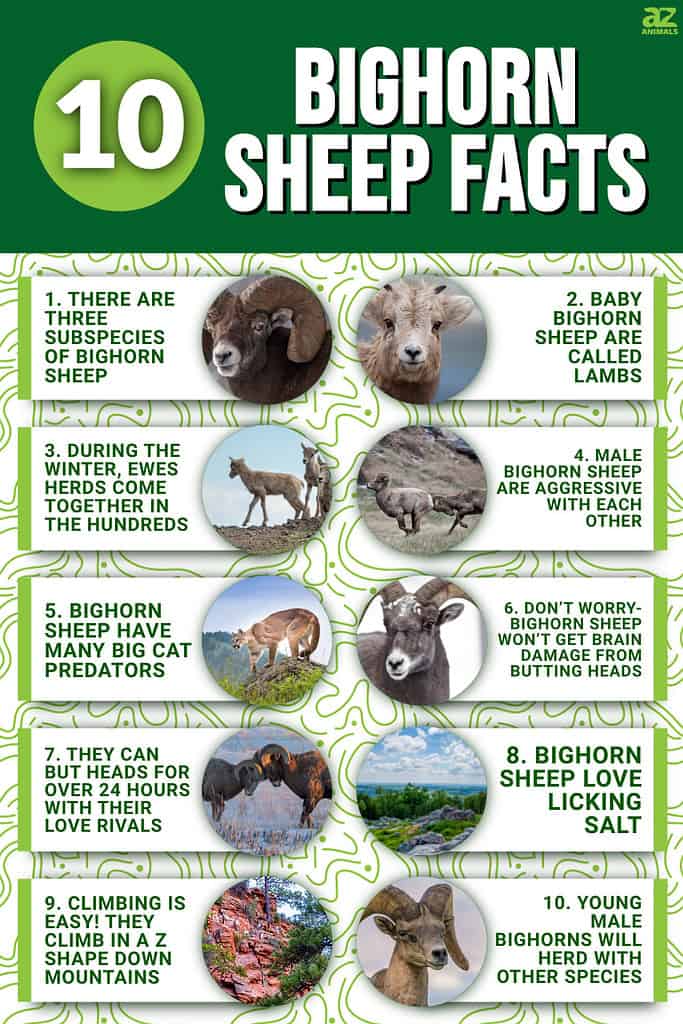
There are several species of bighorn sheep, and they all have unique traits and living conditions! Keep on reading to discover 10 incredible bighorn sheep facts.
1. There are three subspecies of Bighorn Sheep
The Rocky Mountain Bighorn, The Sierra Nevada Bighorn, and the Desert Bighorn sheep live in different environments and have slightly different appearances.
Rocky Mountain Bighorn sheep live in the Rocky Mountains and stand three feet tall. The average weight of a muscular Rocky Mountain Bighorn Sheep is quite large at 300 pounds. About 300-400 bighorn sheep live in the Rocky Mountains.
The Sierra Nevada Bighorn lives in the Sierra Nevada Mountains of California. There are lots of protections for these large sheep since they are close to extinction. Sierra Nevada Bighorn sheep were the first animal listed under the Endangered Species Act in the 21st century.
Last, but not least, the unique bighorn sheep species is the Desert Bighorn sheep. Despite their thick coats, these sheep live in hot and dry conditions in the Southern Mountains in the United States, including some parts of Mexico. They are also sadly endangered.
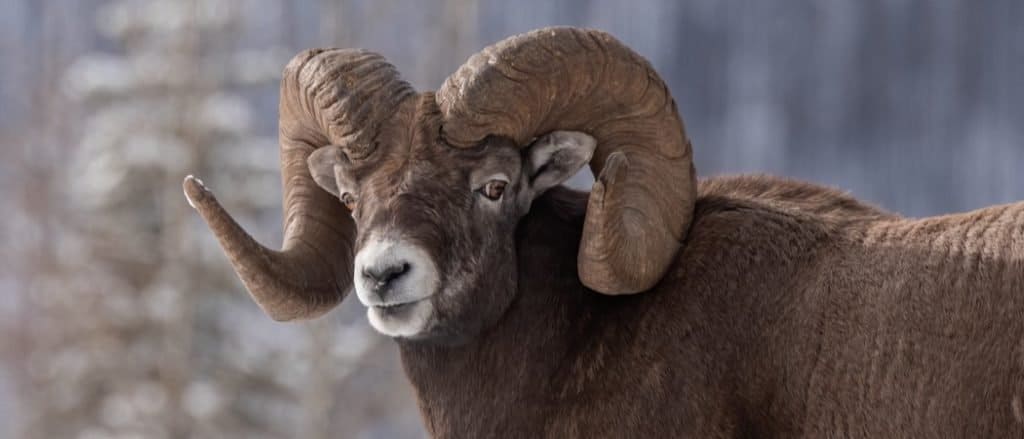
Bighorn Sheep have massive horns and can sometimes weigh 300 pounds.
©Harry Collins Photography/Shutterstock.com
2. Baby Bighorn Sheep are Called Lambs
Just like the children’s rhyme, Mary had a little lamb, bighorn sheep babies are called lambs. They weigh 8-10 pounds as soon as they are born and rely on their mother. In one herd (a group of bighorn sheep), there can be as many as 12 lambs.
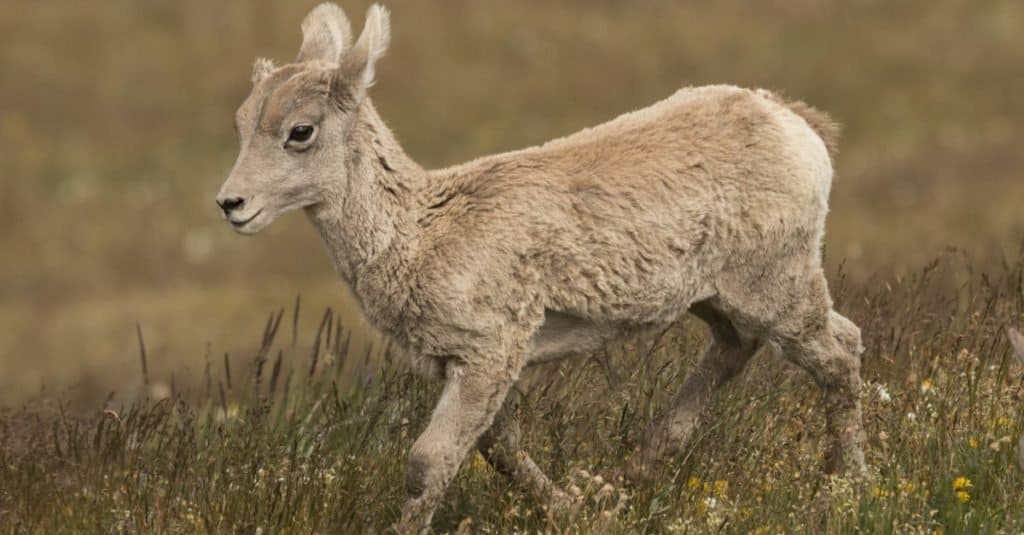
A Bighorn Sheep lamb weighs 8-10 pounds when born.
©Michelle Holihan/Shutterstock.com
There are also separate names for female and male bighorn sheep. Male bighorn sheep are called rams and female bighorn sheep are referred to as ewes. Rams do not raise their children and live their lives as bachelors.
3. During the Winter, Ewes Herds Come Together in the Hundreds
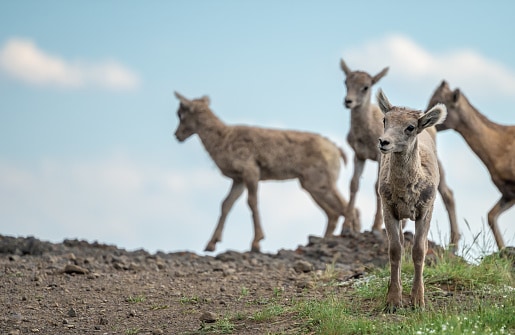
Bighorn sheep separate into herds of all-female or all-male unless they are mating.
©kellyvandellen/ via Getty Images
Unlike other mammals, bighorn sheep separate into all-female or all-male herds unless they are mating. Typically, in a herd of ewes, there are 5-15 ewes. However, during the winter, herds of ewes come together to increase warmth and chances of survival, easily exceeding one hundred. Rams either live alone or stick with their herd of 2-7 bachelors.
4. Male Bighorn Sheep are Aggressive with Each Other
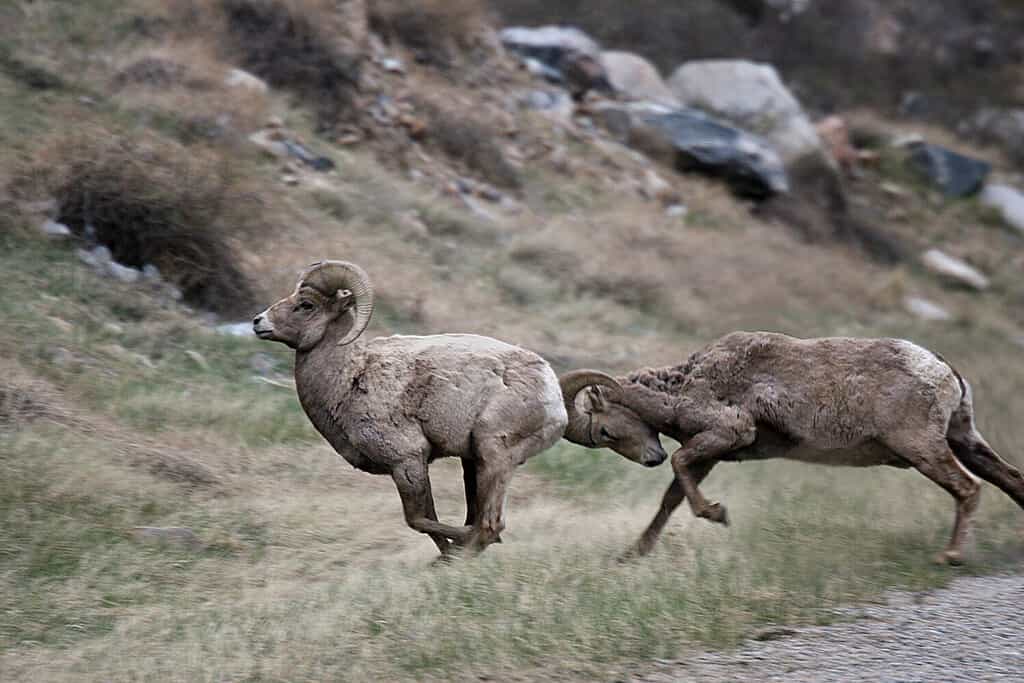
Male bighorn sheep fight over territory and mates.
©Richard Seeley/Shutterstock.com
The males don’t have big horns for show, instead, they use them frequently when protecting their territory and finding a mate. Male bighorns rarely attack humans but will fight each other for dominance.
Did you know that when two male bighorn sheep fight, you can hear the crashing of their horns from miles away? This is especially true for male bighorn sheep living in mountainous areas as the echo amplifies the crashing sound.
5. Bighorn Sheep have Many Big Cat Predators
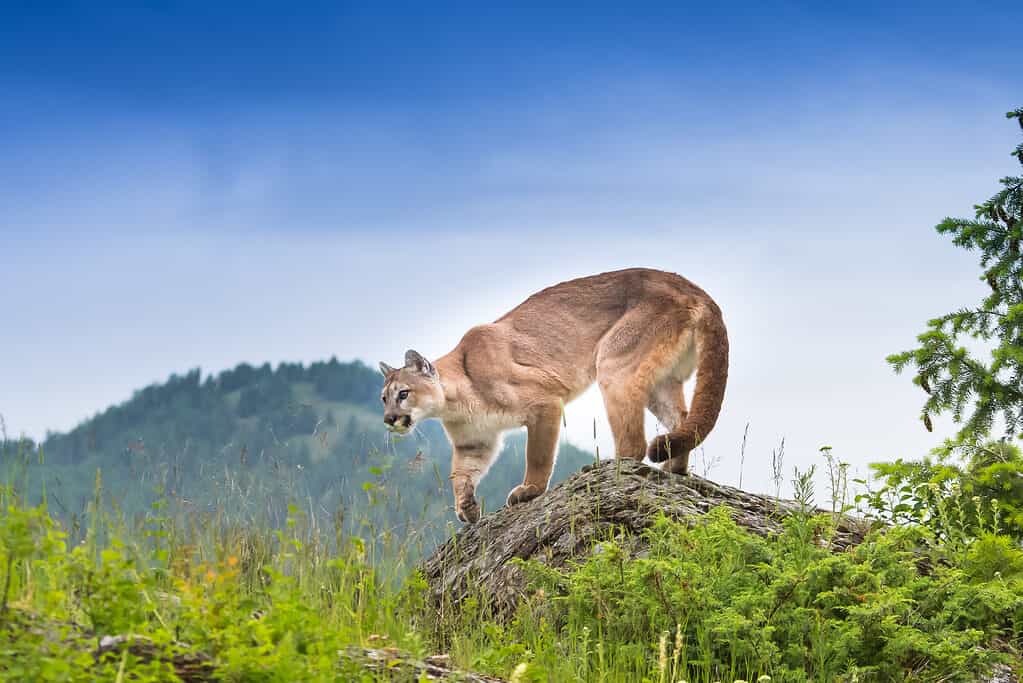
Mountain lions
prey on bighorn sheep.
©Warren Metcalf/Shutterstock.com
The bighorn sheep population has been dwindling since the 1800s because of humans and large cat predators. Common predators that hunt bighorn sheep are coyotes, cougars, large mountain lions, and bobcats. Eagles also prey on young lambs, swooping down and taking them.
6. Don’t worry- Bighorn Sheep Won’t Get Brain Damage from Butting Heads
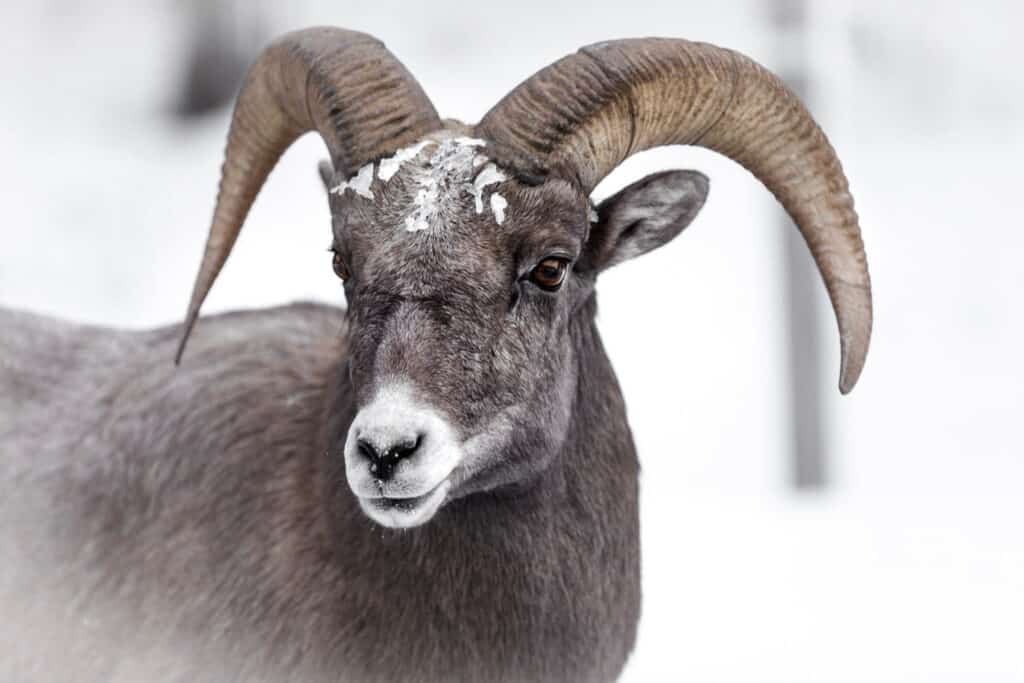
Bighorn Sheep have protected brains just like woodpeckers.
©Trace Hudson/Shutterstock.com
It’s scary to watch two bighorn sheep charge at each other as fast as 40mph, but we promise their heads are safe! Bighorn sheep are born with ‘bubble wrap protected’ brains. No, they are not surrounded by bubble wrap, but their brains automatically increase blood flow to their brains’ vascular tree, much like how woodpecker birds protect their brains.
So, even though sheep bash their heads all day, they are unlikely to develop a concussion or brain injury.
7. They can But Heads for Over 24 Hours with their Love Rivals
During mating season, rams look for ewes. Usually, there is a higher population of ewes than rams, leading to a fight between rams. It is best not to get in the way of two rams fighting as they have speed, power, and stamina.
Rams will headbutt for up to 24 hours to compete with their love rival. Whoever lets go first, loses, and the winner mates with the ewe. Sheep mate in the early fall and remain pregnant during winter, before giving birth in Spring.
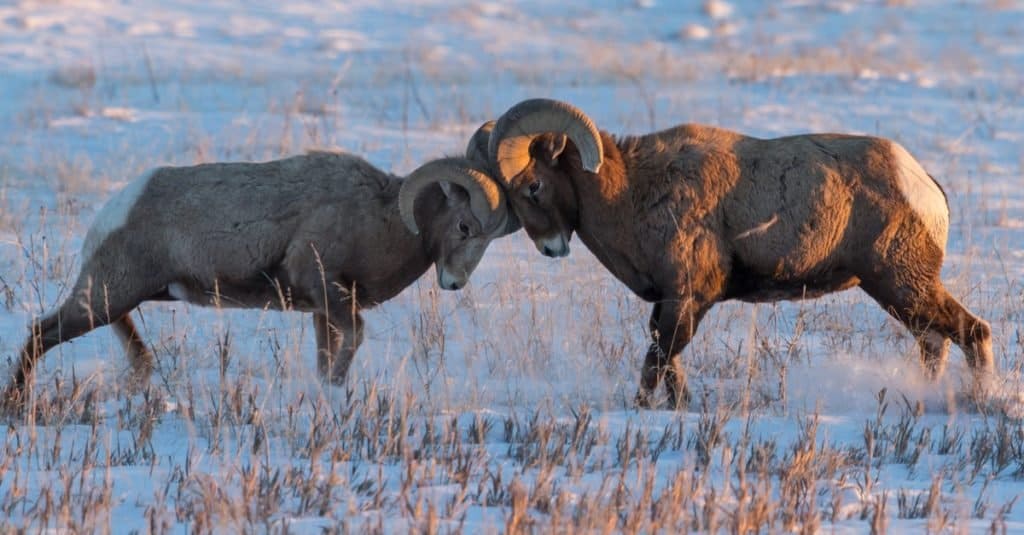
Bighorn sheep rams battle during the mating season and can but heads for up to 24 hours.
©Warren Metcalf/Shutterstock.com
8. Bighorn Sheep Love Licking Salt
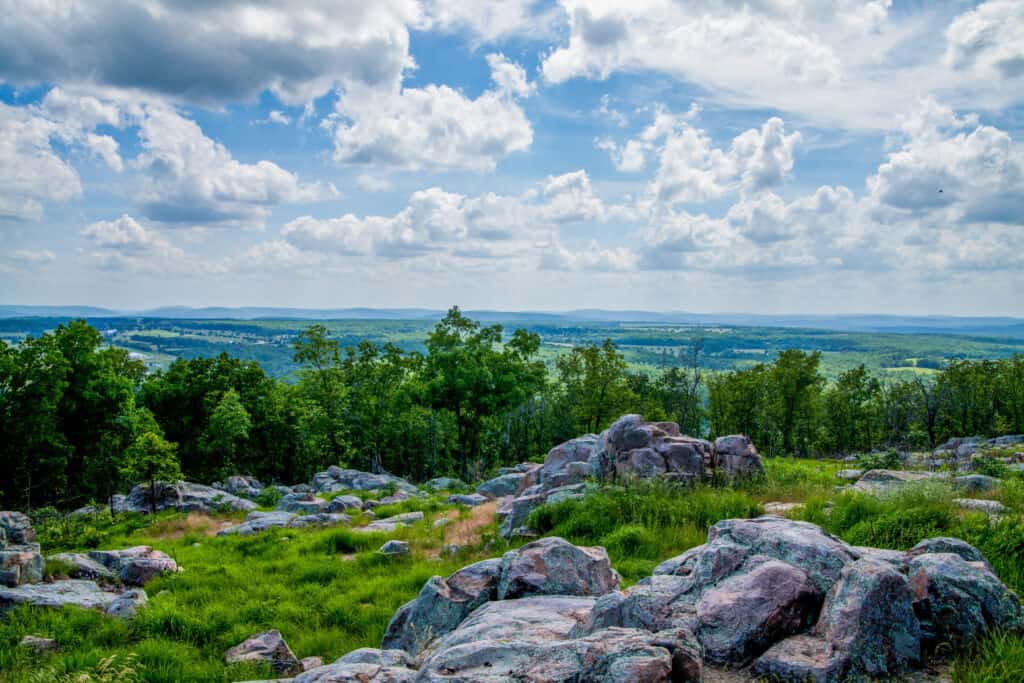
Like most animals – bighorn sheep seek out salt deposits on rocks.
©Fulfilled Hope Images/Shutterstock.com
Multiple animals love licking salt. You can usually find bighorn sheep licking natural salt in the runoff of a mountain. Bighorn sheep will seek salt and lick the rocks of the mountains.
Most towns and cities that snow uses a salt machine to melt the ice and smoothen the roads for safety. Bighorn sheep living near the roads will travel onto the concrete and lick the leftover salt. Deer, goats, and elephants also love licking salt.
9. Climbing is Easy! They Climb in a Z Shape Down Mountains
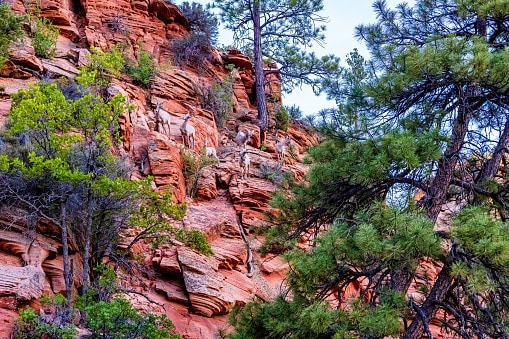
Steep, rocky mountains are nothing to bighorn sheep – they are made for climbing!
©Wirestock/ via Getty Images
Bighorn sheep don’t worry about climbing and do so with ease since their bodies are built to handle the roughness of their environment. These amazing animals have large and muscular bodies to lift and pull themselves up and down mountains. Unlike other animals, when a mountain edge is too steep, bighorn sheep look for ledges to step on and climb down in a Z shape.
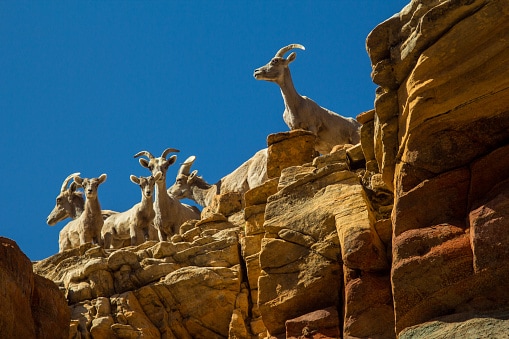
The hooves of bighorn sheep have a split used for holding onto rocks.
©Adam Mustafa/ via Getty Images
The hooves are not slippery and instead have a split used for pinching and holding onto rocks. The claws higher up on a bighorn sheep’s hoove are used as a stopping break. Bighorn sheep use their advanced climbing skills to hide and run from predators that cannot climb onto small ledges.
10. Young Male Bighorns will Herd with Other Species
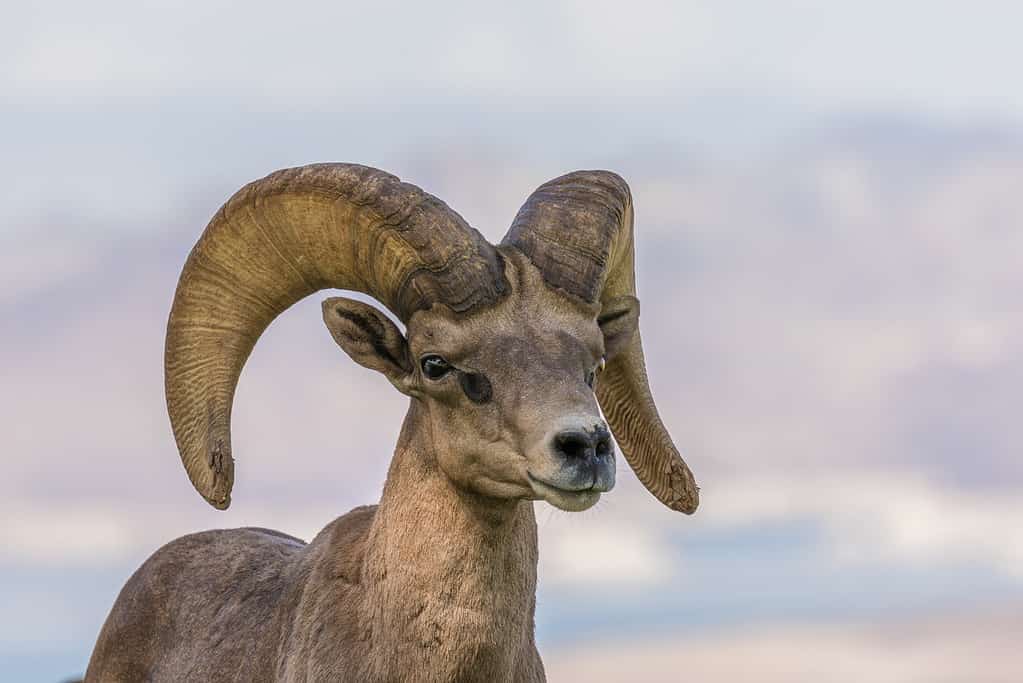
Lonely young bighorn sheep will herd with other species.
©Tom Tietz/Shutterstock.com
Young male bighorn sheep have been spotted in the wild herding with other animals. When a young male bighorn sheep is lonely, they bond with other animals. When a bighorn sheep turns 2, they typically leave their mother’s side to find a male herd, but it is not easy.
Common animals that coexist with young male sheep include cattle like cows and horses.
The photo featured at the top of this post is © iStock.com/SWKrullImaging
Thank you for reading! Have some feedback for us? Contact the AZ Animals editorial team.



